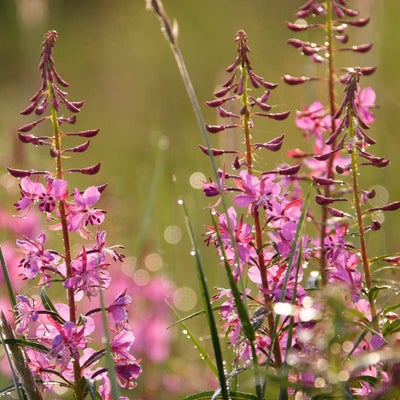
Quick facts
Rosebay willowherb’s botanical name is Chamaenerion angustifolium
Many species of Epilobium are also commonly known as willowherb
Their nectar-rich flowers are great for pollinators and many invertebrates feed on the leaves
Willowherbs readily self-seed. Silky plumes surround the seed, allowing them to be dispersed by wind
If you need to control willowherbs, non-chemical methods are easy and effective
What do willowherbs look like?
Willowherb is the common name for numerous plant species; six often found in UK gardens are:
Rosebay willowherb (Chamaenerion angustifolium, syn. Epilobium angustifolium and Chamerion angustifolium)
Rosebay willowherb is a UK that produces low of leaves each spring. Narrow, willow-like leaves are arranged around tall stems up to 1.5m (5ft) high. Striking spikes of purplish-pink flowers bloom from summer to autumn, followed by long, pink-tinged seedpods containing fluffy seeds. Its shallow root system spreads by (underground stems capable of producing roots and shoots).
Great willowherb (Epilobium hirsutum)
Great willowherb is a UK native perennial growing to 2m (6½ft) in height. It is also known as ‘hairy willowherb’ due to the fine, soft hairs that cover its stems and narrow lance-shaped leaves. Pinkish-purple flowers with pale centres are about 2.5cm (1in) across. It favours damp habitats, such as streamsides or marshy ground, where rhizomes spread to form a dense mat of roots.
Hoary willowherb (Epilobium parviflorum)
Hoary willowherb is a UK native perennial. It is similar in appearance to great willowherb but is smaller in stature, growing to about 75cm (29in) tall, and its flowers are a paler pink.
Broad-leaved willowherb (Epilobium montanum)
Broad-leaved willowherb is a UK native perennial reaching a height of about 75cm (29in). It favours partial shade and is common in gardens. It has relatively wide, oval shaped, almost hairless leaves. Its flower tend to droop before opening and it bears pale pink flowers that are usually less than 1cm (½in) across.
Pale willowherb (Epilobium roseum)
Pale willowherb is a UK native perennial reaching a height of about 75cm (29in) when growing in damp ground. Its leaves vary in shape but tend to be wider in the middle. Its flowers are white or pale pink.
American willowherb (Epilobium ciliatum)
American willowherb, also known as fringed willowherb, is a fast-growing, clump-forming perennial that was introduced to the UK and is now widely . It can reach a height of 1m (3½ft) and has narrow, finely toothed leaves. Its flowers are pinkish-purple and can be very pale.

Identifying exactly which willowherb you have can be challenging because hybrids often occur when two or more species grow near to each other. If you grow willowherbs for interest or to increase the of your garden and want help identifying the species you have, RHS members can use the RHS Gardening Advice service.
If you want to control the growth of willowherbs in your garden, distinguishing between them isn’t essential, as the same methods can be used for all.
Did you know?
Willowherbs are in the plant family Onagraceae, along with fuchsias and evening primroses. Their flowers have four petals that are notched. On some species, the notching is deep enough to make it look like there are eight petals.
Are willowherbs weeds?
Willowherbs are great for wildlife; rosebay willowherb and great willowherb are listed on the RHS British wildflowers Plants for Pollinators list. In addition to providing food for pollinators, the caterpillars of numerous moths, including the elephant hawk moth, feed on willowherb leaves.
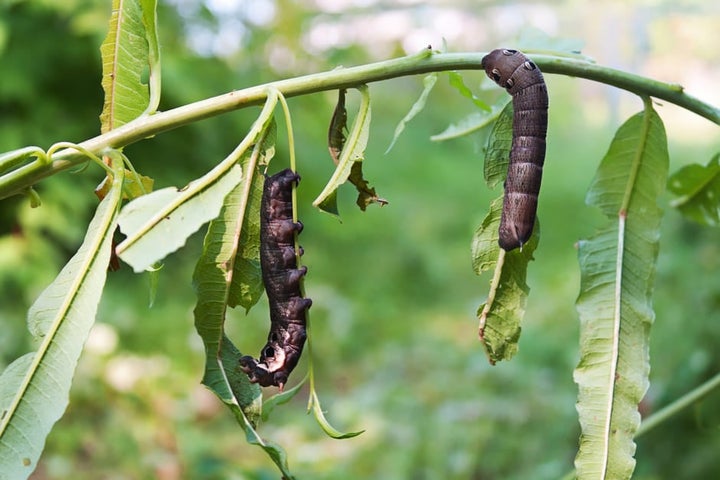
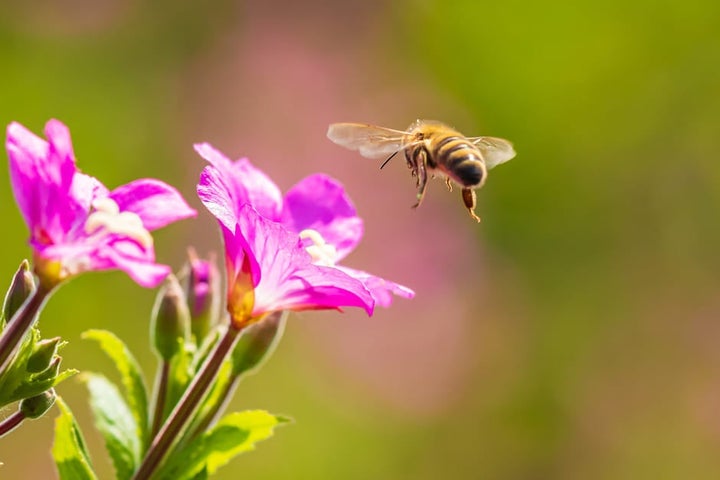
Willowherbs also make attractive additions to a garden and cultivars of rosebay willowherb, such as Chamaenerion angustifolium 'Album' and C. angustifolium 'Stahl Rose', are widely available. Their height, mass of flowers, fluffy seeds and benefits to pollinators make them useful garden plants. Both these cultivars spread, particularly in damp soil, but this can be desirable when trying to fill a large border.
However, as willowherbs are vigorous , that can outcompete and smother smaller plants, they may not be welcome in some areas of your garden.
What is a weed?
The term ‘weed’ describes a plant that is growing where it isn’t wanted. Weeds usually thrive in average garden conditions, reproducing and spreading easily. It is up to you to decide what you call a weed and what you choose to retain or remove.
Frequently asked questions about controlling willowherbs
Here are our answers to your most common questions about dealing with willowherbs:
How invasive are willowherbs?
Willowherbs spread by rhizome and root growth, but seed is their most effective means of spreading. In summer and autumn, willowherbs produce large amounts of seed with fluffy plumes that aid dispersal. Seed travels far on the slightest breeze and can quickly colonise areas of bare soil. The spread of American willowherb, an introduced species, demonstrates the effectiveness of this method. First recorded in the UK in 1891, American willowherb is now and widespread.
Although produced in large numbers and able to spread far, willowherb seed is not particularly long-lived – its viability decreases significantly after 18 months.
Did you know?
Rosebay willowherb is also known by the common name fireweed, due to its ability to quickly colonise burnt ground. During the Second World War it became known as bombweed, because it thrived in the ruins and rubble of bombsites.
Do I need to get rid of willowherb?
No – allowing some to grow in a species-rich lawn, meadow, wildlife corner or less-cultivated area is a great way to attract wildlife, boost the of your garden and gives you the chance to enjoy its attractive flowers.
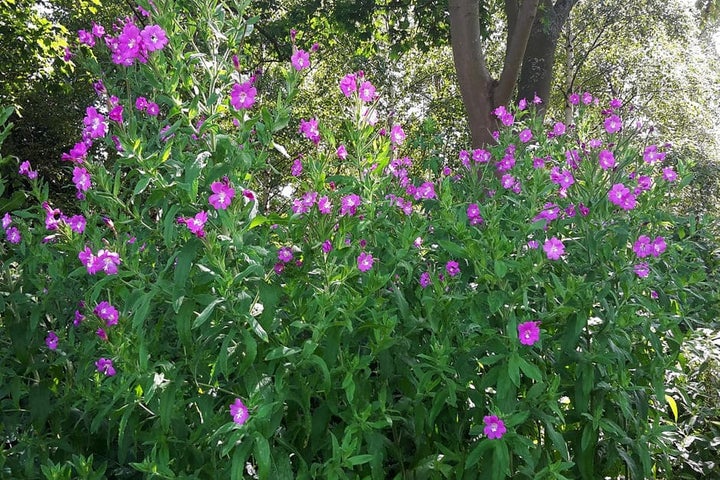
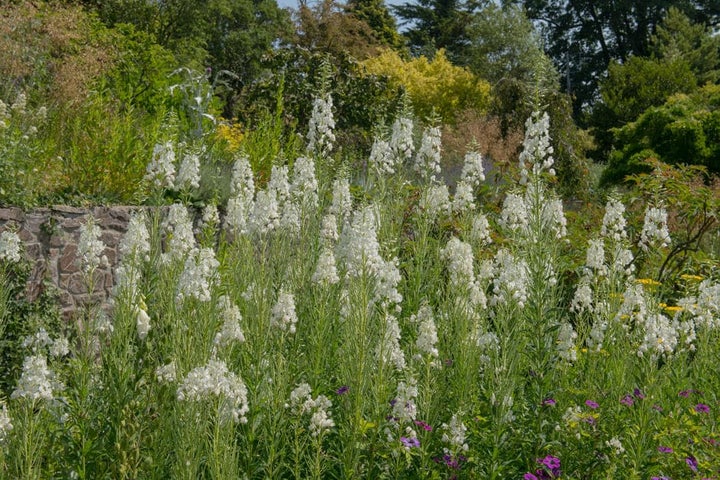
It is, however, a good idea to control the spread of willowherb to stop it becoming too abundant in parts of the garden where it might smother and outcompete smaller or less vigorous plants.
What is the easiest way to kill willowherb?
If you have willowherb growing where it is not wanted, there are several easy ways to remove it:
- Hoe off and young plants – sharply slide the blade of a hoe just under the rosette of leaves to kill young plants. Hoe on a warm, dry or windy day, so exposed roots dry out quickly. removes weeds with minimal soil disturbance, helping to maintain soil health.
- Pull out young plants – on loose soil, weed out small willowherb plants by hand.
- Fork out – use a hand fork or border fork to lift and remove the roots of older plants. Willowherbs have shallow roots, so even well-established clumps are fairly easy to fork out. This method can also be used around the edge of a clump to curtail its spread.
- Prevent seeding – control the spread of willowherbs by deadheading plants you wish to keep, or by removing plants before they set seed.
- Smother seedlings – apply a mulch of organic matter, around 10cm (4in) thick, to your soil in early spring to smother emerging seedlings. Alternatively fill gaps in borders with ground cover plants.
- Smother plants – for large areas containing willowherbs, cover with a layer of compostable material, such as cardboard, and then a layer about 20cm (8in) thick of organic matter, such as or wood chips. Alternatively, use a heavy grade matting. This will block light and prevent growth, causing plants to die. Keep soil covered for a couple of years to ensure this method is effective.
Top Tip
Don’t add willowherb roots, rhizomes (thick underground rooting stems) or seedheads to your home compost bin, as it may not reach high enough temperatures to kill them. Instead, put them in your council green waste recycling bin or take them to your local recycling site.
Should I use weedkiller?
No – willowherbs show resistance to many weedkillers and are easy to control using non-chemical methods.
For more information, see our page on Weeds: non-chemical controls.














